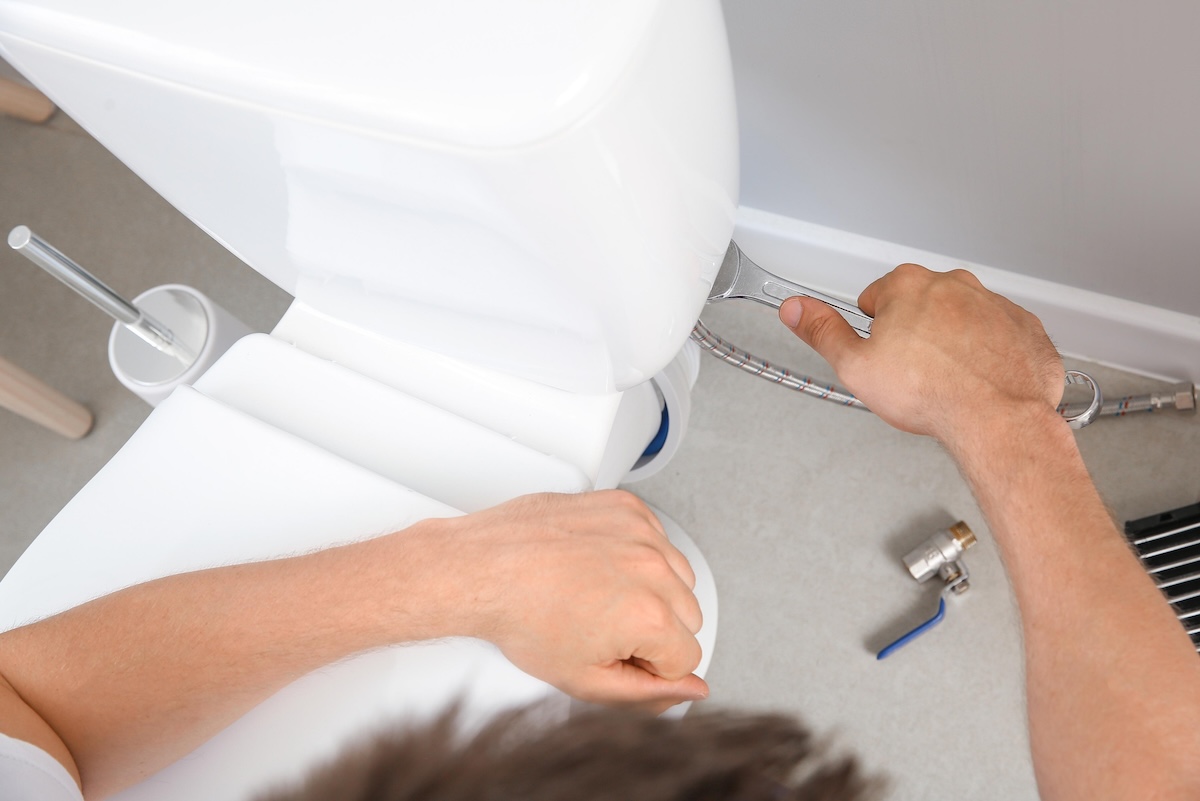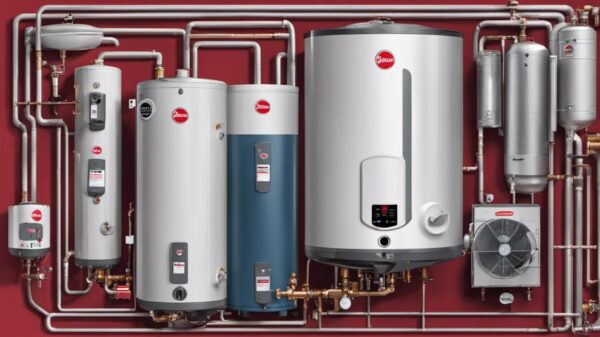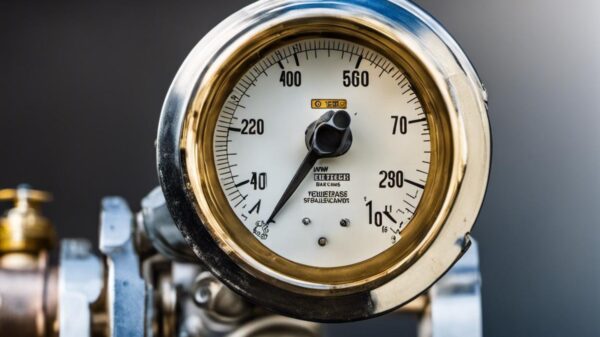Quick Fixes for a Running Toilet
Repairing a running toilet is not as daunting a task as it might seem at first glance. By equipping oneself with a basic understanding of toilet mechanics; which involve the tank and bowl, the flapper, the fill valve, and the overflow tube, one is ever ready to take on this common household problem. This knowledge is the first line of defense in maintaining an efficient, functioning toilet and nipping any potential issues in the bud. Go beyond just jiggling the handle to stop the incessant running of water and take a deeper dive into diagnosing the issue, be it a poorly sealing flapper, a malfunctioning fill valve or an excessively high water level.

Understanding the Mechanics of a Toilet
Unearthing the Mystery: The Essential Components of a Toilet and Their Functions
To be sure, there’s a silent hero in all our homes that most of us use daily but rarely give a second thought. Yes, we’re talking about everyone’s unsung companion—the humble toilet. What may seem like a simple fixture actually houses numerous components working harmoniously to perform one indispensable job. Today, we’re going to delve down and dissect this mysterious yet essential machine. Let’s take a journey into the heart of a toilet, enabling you to understand its intricate innards.
First up is the tank. On lifting the lid, you’ll find the tank is where most of the toilet’s mechanisms are located. Despite the possibly intimidating maze of interconnected components, remember, each has a distinct function. So let’s get started.
The fill valve, commonly known as the ballcock, is the elongated tube positioned at one side of the tank. It’s responsible for refilling the toilet tank after each flush. The attached float ball rises and falls with the water level, regulating the fill valve. When the water level lowers, the float ball induces the fill valve to refill the tank, and once the water has reached the predetermined level, the fill valve cuts off.
Next comes the overflow tube, an essential component designed to prevent potential mishaps. Acting as a fail-safe, it ensures that water doesn’t spill over the tank and onto your bathroom floor. It channels the excess water into the bowl when the fill valve or float ball malfunctions.
The flapper is yet another key performer. Positioned over the siphon hole at the tank’s bottom, it holds the water until the toilet is flushed. Upon flushing, it lifts to allow water out from the tank, creating a rush of water to the bowl that activates the siphon action.
Which brings us to the toilet bowl, the core of a toilet system. It constitutes a siphon trapway, a curved channel, which holds standing water to block sewer gases. When the bowl takes in a surge of water from a flush, the water in the siphon trapway is forcibly pulled down and out, creating the siphon action that empties the bowl.
The trip lever, meanwhile, is the trigger of the entire flushing operation. This humble character sits flush with the outside of the tank and, when engaged, pulls up the lift chain, thus raising the flapper and releasing the water from the tank to the bowl.
Finally, the wax ring may seem insignificant, but we assure you, it isn’t! This ring seals the gap between the base of the toilet bowl and the drain pipe, preventing any leaks onto the bathroom floor.
And there you have it – every toilet’s hard-working cast, putting on a seamless performance day in, day out. Understanding the functional anatomy of a toilet is not only intriguing but also empowering. With this newly acquired knowledge, you’ll be equipped to handle minor toilet repairs—just another handy skill for the tool belt! So here’s to appreciating the mundane yet vital hero of our homes, the reliable and fascinating toilet.
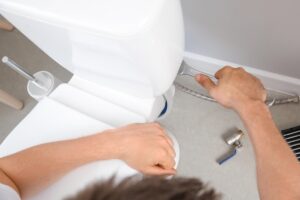
Identifying the Problem
Now that we’ve delved into the structure and functioning of our toilets, it’s time to tackle some common issues that often arise. An all-too-frequent problem many households face is a running toilet. This issue is not only annoying but it also wastes valuable water and can even inflate your water bill, if not addressed promptly. But fret not! It’s a problem that can usually be identified and resolved without the need for a professional plumber.
The first order of business in addressing a running toilet is to play detective and identify the source of the problem. It’s often as simple as one of a handful of components needing adjustment or replacement within the tank.
Start your investigation by taking a look at the water level in the tank. Ideally, it should rest about an inch below the top of the overflow tube. If it’s too high, you’ll need to adjust the fill valve accordingly. This adjustment is usually as simple as turning a small screw or sliding a clip along a rod. Experiment with these adjustments until the water level sits comfortably beneath the overflow tube top.
Next, observe the behavior of the float ball during a test flush. Believe it or not, float balls can actually get waterlogged and sink within the tank, causing the fill valve to overcompensate and keep running both during and after a flush. If the float ball isn’t floating, a replacement is necessary.
Then, it’s time to take a look at the flapper. This critical mechanism is your toilet’s gatekeeper, responsible for the flow of water from the tank into the bowl. Overtime, corrosion, mineral build-up, and even just plain old age can cause the flapper to deteriorate, resulting in a less than perfect seal. You can perform a quick test by pressing down on the flapper with a stick during a flush. If the running stops, bingo – you’ve found your culprit, and it’s time for a flapper replacement.
Remember that the trip lever operates the flapper, so if the chain linking the two is tangled or too long, it can prevent the flapper from sealing properly. Adjust or replace the chain as necessary.
Finally, don’t overlook the wax ring, which serves to protect against water escaping from underneath the toilet. If you’re experiencing a running toilet along with a leak at the base, it may be an indication that the wax ring is damaged and needs to be replaced.
A running toilet is an inconvenience, but knowing your toilet’s anatomy and function can empower you to take charge of the situation. As with any hobby, embarking on toilet repair takes patience and an attitude of lifelong learning. Nevertheless, nothing compares to the pride and satisfaction of having fixed a running toilet on your own. Happy flushing!
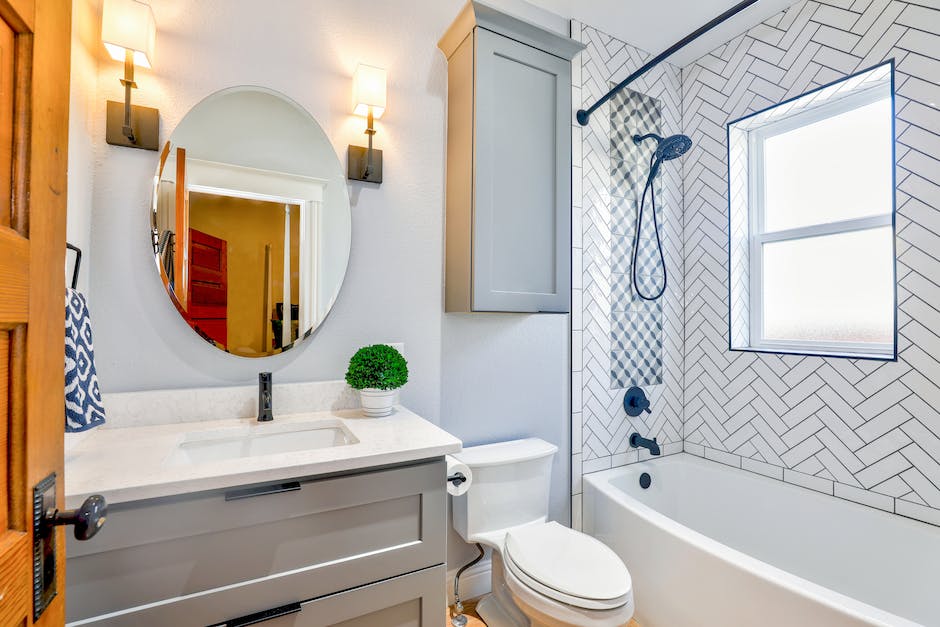
Executing the Fix
Starting off, let’s tackle the running toilet problem.
With a solid understanding of the functional anatomy of your toilet and after identifying the potential issues, it’s down to the nitty-gritty of actual toilet repair. Remember, you’re taking charge here!
Let’s dive into the process!
Step 1:
The first thing you need to do is turn off the water. The shut-off valve is typically located on the wall behind your toilet. Turn it clockwise to cut off the water supply.
Step 2:
Now, to dive into the tank adjustability domain! If the fill level isn’t correct, the fill valve can be regulated. Usually, there’s a screw on top of the fill valve – all you need is to adjust it until the water maintains a level about half an inch below the overflow tube lip when the tank refills.
Step 3:
The toilet’s proverbial lifeline, the chain, demands attention if the flapper isn’t sealing. If the chain is too long or too short, it may prevent the flapper from sealing correctly. Adjust the length as needed until the flapper can seal properly. Make sure there’s just a smidgen of slack when the flapper is in the shut position.
Step 4:
Now, the float ball can be sneaky. A waterlogged float ball can cause a running toilet. If you notice water inside it when you shake it, replace it. It’s a straightforward process; unscrew the old one and screw in the new.
Step 5:
The hero of the flush, the flapper, should always be in top-notch condition. If it appears decayed, warped or built up with mineral deposits, replace it. Simply unhook the old flapper from its base and the chain from the trip lever before hooking in and connecting the new one.
Step 6:
Moving on to the base of the toilet, it’s time to inspect the wax ring. If you notice water seeping out from around the base of the toilet, you may need to change the wax ring. Be warned, this requires unseating the toilet, which is a bit more complicated, but totally within your realm of capability!
There you have it. With these steps, not only are you alleviating the nuisance of a constantly running toilet but also conserving vital water resources – and smiling all the way to a lower water bill. Every step completed helps you refine and master your knowledge about the workings of toilets. This isn’t just DIY repair. It’s independence; it’s satisfaction borne out of self-reliance. It’s that fascination with the inner workings of everyday life that sparks curiosity and pushes us towards discovery and learning.
Conclusion
Ultimately, demystifying a toilet’s internals enhances one’s ability to solve related issues effectively. You become more than an observer, morphing into a skillful problem-solver, capable of fixing a running toilet by adjusting the float, replacing the flapper, or rectifying the fill valve as per the requirement. By embracing the hands-on approach, not only do you save significant time and money, but also gain substantial knowledge and practical experience for potential future plumbing problems. Remember, understanding, identifying, and executing are your strategic steps to a smooth flowing, efficient toilet. Trust in your abilities to triumph over a running toilet and restore calm and quiet to your bathroom sanctuary.


